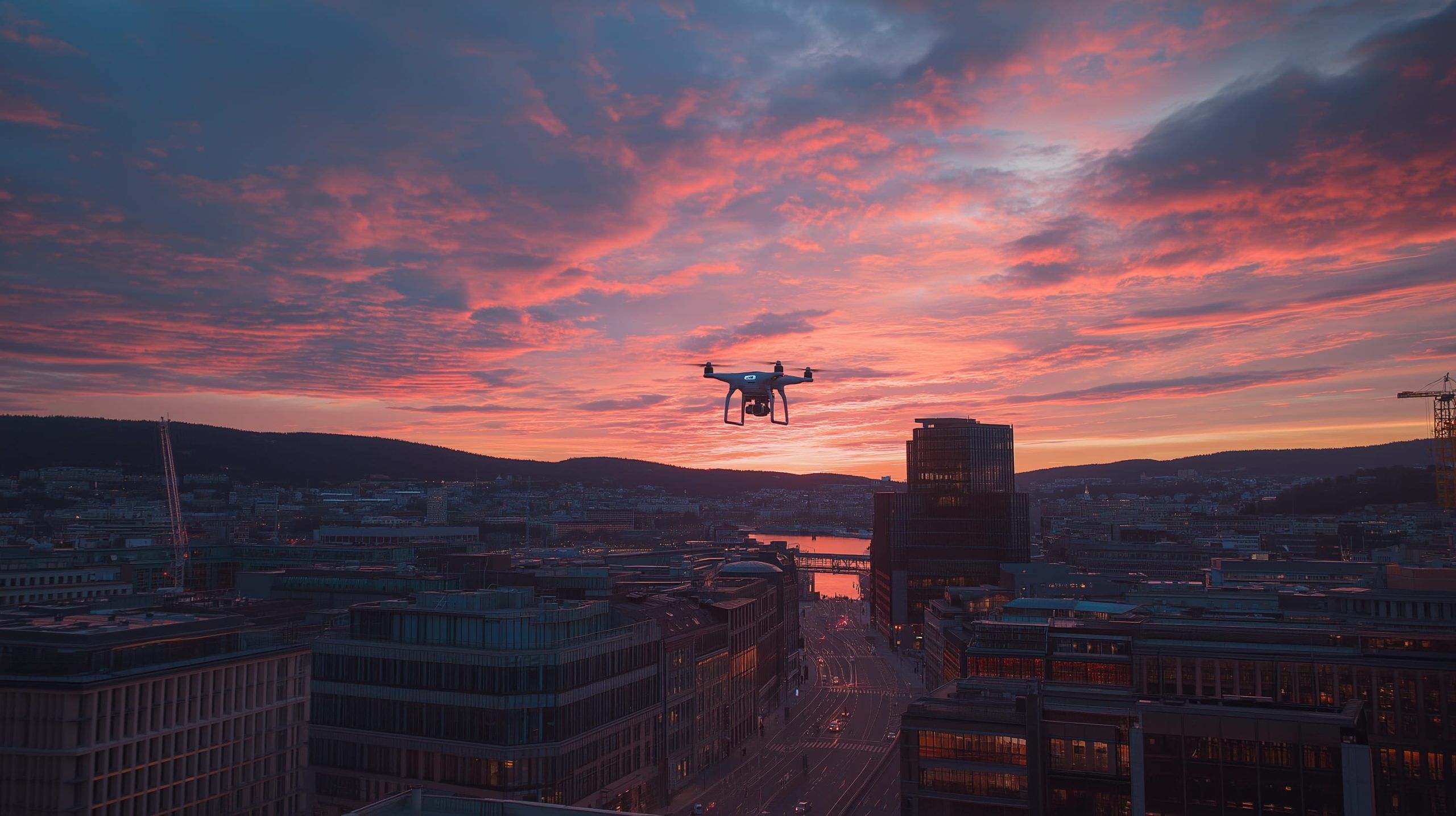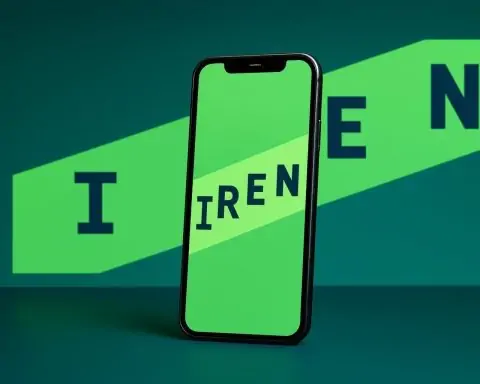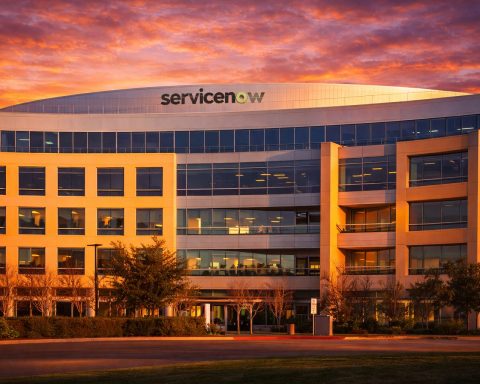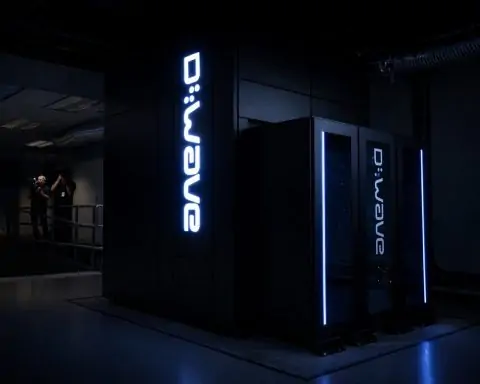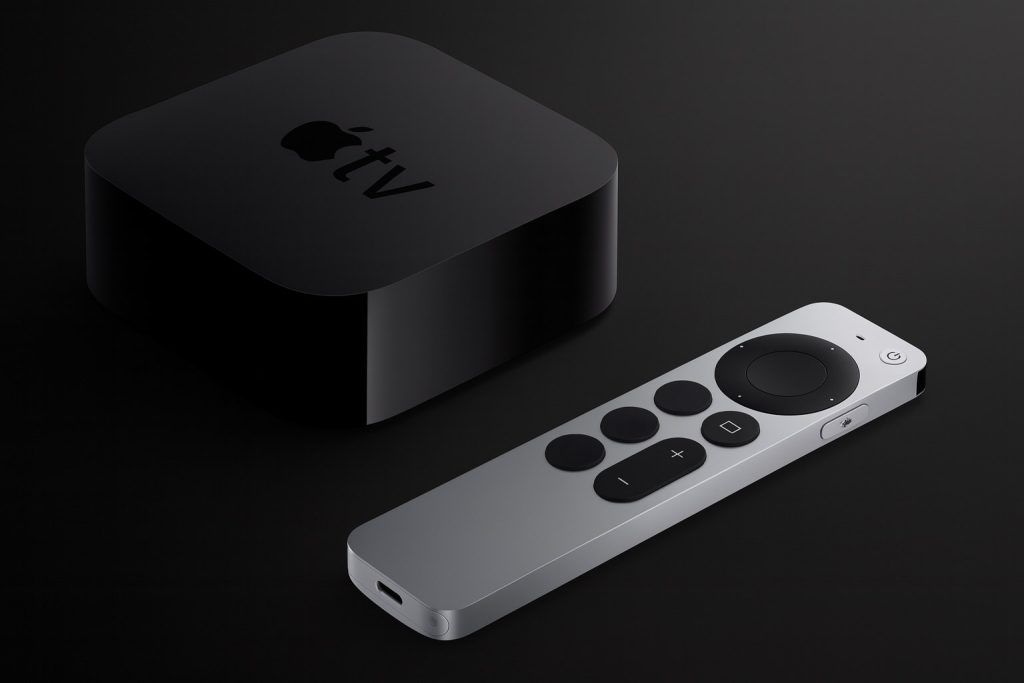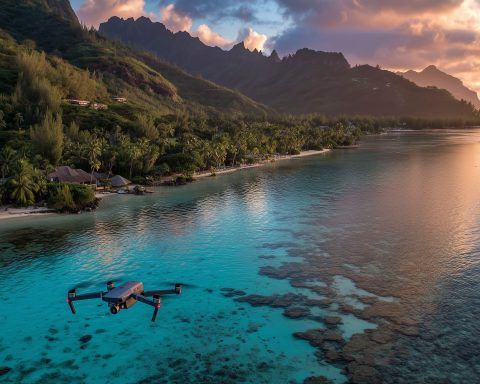- Norway adopted EASA’s unified drone rules in 2021, aligning Oslo’s laws with the EU Open, Specific, and Certified framework.
- Drone operators must register to obtain a unique operator ID; EU/EEA citizens register in their home country and do not need a separate Norwegian registration, while non-EU travelers must register in Norway or another EASA country via Flydrone.no.
- Third-party liability insurance is mandatory for drones heavier than a toy, with coverage of at least 0.75 million Special Drawing Rights (about €1 million).
- If your drone carries a camera or sensor, you must register its use with the Norwegian National Security Authority (NSM) before flight.
- Pilot licensing follows the Open category, with A1/A3 as the basic certificate and A2 required for more complex operations near people.
- A1 allows flying drones under 250 g near people, including mini drones like the DJI Mini series.
- A2 enables mid-sized drones up to about 4 kg to operate near people, with a minimum distance of 30 meters from bystanders (5 meters if the drone has a low-speed mode).
- A3 restricts flights to areas completely away from people, requiring at least 150 meters from any residential, commercial, or recreational site.
- No-fly zones include airports within 5 kilometers and Oslo’s central R-102 zone, a 1 nautical mile (1.85 km) radius around Slottsparken.
- Night flights are allowed only with a flashing green light for visibility and while maintaining visual line of sight.
Drones have opened up amazing aerial views of Oslo’s fjords and cityscape – but flying one comes with strict rules. Norway has comprehensive drone regulations that apply equally to recreational hobbyists and commercial operators. These rules are overseen by the Civil Aviation Authority of Norway (Luftfartstilsynet) under a common European framework set by the EU European Union Aviation Safety Agency (EASA) [1]. In 2021 Norway adopted EASA’s unified drone rules, meaning Oslo’s drone laws are largely the same as those across Europe, with some local restrictions. Crucially, there is no legal distinction between recreational and commercial drone use in Norway – all pilots must follow the same requirements for registration, certification, and safe flying [2]. This report breaks down everything you need to know before taking off in Oslo, from registration and licensing to no-fly zones, privacy, and penalties.
Regulatory Authorities and Framework
CAA Norway (Luftfartstilsynet) is the national authority regulating drones, responsible for implementing EASA’s rules. EASA’s framework divides drone operations into three risk-based categories: Open, Specific, and Certified. Most everyday drone flights fall into the Open category (for lower-risk operations under 25 kg) [3]. Higher-risk activities (like beyond-visual-line flights or heavy drones) require special Specific category authorization, and only very complex, commercial operations (e.g. large cargo or passenger drones in the future) would be Certified. Norway’s laws are fully aligned with the EU rules, so a drone operator registered and certified in any EASA member state can fly in Oslo under the same conditions [4]. Likewise, Norwegian-registered operators can use their EASA drone pilot certificates abroad in Europe. The CAA Norway provides guidance and oversight, while local police enforce violations on the ground. (Notably, since 2022 Norway bans all Russian citizens and entities from flying drones in its airspace due to security sanctions [5] – a reminder that national security can impact who is allowed to fly.)
Drone Operator Registration Requirements
Registration is mandatory for anyone flying a drone in Norway (with very limited exceptions for tiny toys). All drone operators must register with a national aviation authority to obtain a unique operator ID. If you’re an EU/EEA citizen, you should register in your home country’s drone registry and you do not need a separate Norwegian registration [6]. If you’re from outside the EU (for example, an American tourist), you must register as a drone operator in Norway or another EASA country before flying – typically you register in the first country where you intend to fly [7]. Norway’s online portal Flydrone.no is used for domestic operator registrations. This registration requirement applies regardless of whether you fly for fun or for business [8].
When you register, you’ll receive an operator number that must be marked on your drone (usually on a visible sticker or engraving) [9] [10]. This ID links the drone to you in case of incidents. You are also required to have valid liability insurance for your drone. In Norway third-party insurance is mandatory for all drones heavier than a toy – the policy must cover at least 0.75 million Special Drawing Rights (around €1 million) in damage [11]. Insurance and registration are essential whether you’re a private hobby pilot or a company; Norwegian law makes no distinction between recreational and commercial operators for these requirements [12] [13]. Finally, if you plan to use any camera or sensor on the drone (which is most of us), be aware of a unique Norwegian rule: before flying with a camera or other sensors, you must register the use of photo/video sensors with the Norwegian National Security Authority (NSM) [14]. This is an online formality to notify authorities of aerial photography – it’s required for foreign nationals and recommended for all operators as part of Norway’s security measures. In summary, get registered, label your drone, insure it, and log any planned aerial filming with NSM before you launch.
Pilot Licensing and Certification (A1/A3 and A2 Certificates)
To legally fly a drone in Oslo (or anywhere in Norway), pilots need to pass the required exams and obtain an EASA drone certificate for the type of flying they’ll do. Norway’s pilot licensing follows the EASA Open category subcategories: A1, A2, and A3. All pilots must at minimum complete the online training and exam for the A1/A3 certificate (this is a combined basic level test) if their drone weighs over 250 grams [15]. The A1/A3 exam can be taken through Flydrone.no and is available in English. Pilots who want to fly in more complex situations (heavier drones in populated areas) must also obtain the A2 certificate, which involves additional self-practice and an in-person theory exam at a Driver and Vehicle Licensing Office in Norway [16]. The A2 course is offered online in English, but the exam is proctored on-site in Norway [17]. In short, A1/A3 (basic) certification is required for most drones, and A2 (advanced) certification is needed if you intend to fly a larger drone closer to people.
What do A1, A2, and A3 allow? These subcategory ratings determine where and how you can fly in the Open category:
- A1 – “Fly over people” (Low-risk subcategory): Allows flying small drones under 250g (or heavier C1-class drones with special tech) in residential or populated areas. A1 drones can be flown close to people, and brief flight over uninvolved persons is permitted if accidental, but never over assemblies of people (no flying over crowds) [18] [19]. This subcategory covers mini drones like the DJI Mini series – they pose minimal risk but you still must avoid endangering anyone.
- A2 – “Close to people” (Moderate-risk subcategory): Allows flying medium-size drones (typically C2-class drones up to ~4 kg). You can operate in urban or populated environments but must keep a safe distance from any uninvolved person. The rule is at least 30 meters distance horizontally, which can be reduced to 5 meters if the drone has a low-speed mode enabled [20]. Importantly, no flying over uninvolved people even in A2; you must maintain that buffer zone around bystanders. A2 certification basically lets you do professional operations like filming or surveying in towns as long as you don’t get too close to people.
- A3 – “Far from people” (Higher-risk subcategory): Covers larger drones (up to the max 25 kg) or any drone flown in higher-risk conditions. Under A3 you may NOT fly in populated areas at all. You must only fly in areas “where no uninvolved persons are present” and at least 150 meters away from any residential, commercial, industrial or recreational area [21]. In practice, A3 means you need to be out in wide open spaces – far from cities, housing, or gatherings – for example, flying over empty fields, remote land, or coastline well away from people. This category is essentially “rural only.”
In the Open category, all pilots must also follow the standard limitations (detailed in the next section) regardless of subcategory – like max altitude 120 m, line-of-sight, etc. There is no special “commercial license” beyond these same A1/A2/A3 certificates [22]. Whether you’re flying for fun or for pay, you use the above certifications. A real estate photographer in Oslo, for instance, needs an A2 certificate if using a 2 kg drone in a neighborhood, but there isn’t a separate permit just because it’s commercial – the rules are identical to hobby use [23]. Both recreational and commercial operators are expected to have the proper EASA competency certificate for their category of flight [24].
If your planned drone operation exceeds what the Open category allows, you will need to pursue a Specific category authorization from CAA Norway. This is essentially a special permit for higher-risk use cases – for example, flights beyond visual line of sight (BVLOS), flying directly over people or crowds, operating a drone heavier than 25 kg, flying at night beyond VLOS, or other situations the standard rules don’t cover [25]. Obtaining a Specific category permit typically requires submitting a risk assessment (often following the SORA – Specific Operations Risk Assessment – methodology) and getting approval from the CAA [26]. Starting in 2024, EASA also introduced predefined Standard Scenarios (STS) that Norway accepts, which let operators simply declare compliance for certain common operations (like approved BVLOS scenarios with particular drone classes) rather than apply from scratch each time [27] [28]. But for most casual and commercial users in Oslo, the goal is to stay within the Open category if possible – it’s simpler and avoids needing special permission. Just make sure you have the right A1/A2 certifications and abide by all the operational rules.
Flight Rules and Restrictions in Norway
Once you’re properly registered and certified, you still have to obey a variety of flight restrictions intended to keep the airspace safe and prevent nuisances on the ground. These include strict no-fly zones, altitude limits, distance-from-people rules, and conditions on night or weather flying. Breaking these rules is a serious offense, so every drone pilot should be familiar with them before flying in Oslo.
No-Fly Zones and Restricted Areas
Certain areas are outright off-limits to drones (or require special permission) due to safety, security, or privacy concerns. Before every flight, you must check that your planned location is legal – it’s the pilot’s responsibility to ensure the airspace is clear for drones [29]. In Norway, the major no-drone zones include:
- Airports and Aerodromes: It is illegal to fly within 5 kilometers of an airport or airfield unless you have explicit permission from air traffic control [30]. This 5 km (3.1 mile) exclusion zone is to prevent interference with manned aircraft during takeoff and landing. Oslo’s main airport (OSL Gardermoen) is far outside the city, but never fly near smaller airfields or heliports either. Many airports (operated by Avinor) now use the “Ninox Drone” app to manage drone clearance requests [31]. Note: Norway is transitioning to a new rule based on controlled airspace rather than a fixed 5 km radius – soon it will be forbidden to fly anywhere inside an airport’s control zone (CTR) without a permit [32]. Pilots will need to consult airspace maps (AIP charts) to know the CTR boundaries and use digital systems to request clearance. Always assume airports are zero-tolerance zones – contact the airport/ATC if you need to fly nearby, or just stay well beyond 5 km for safety.
- Central Oslo (Downtown No-Drone Zone): Oslo’s city center has a permanent flight restriction (EN R-102) that bans all drones (and even other low-flying aircraft) over the downtown core without prior exemption [33] [34]. This special zone, established for national security, is a 1 nautical mile radius (~1.85 km) around the Royal Palace (Slottsparken) in the heart of Oslo [35]. Essentially, all of central Oslo is a no-drone zone by default (more details in the next section about Oslo-specific rules). You must apply to CAA Norway for permission to fly in this area, and approvals are rare. Do not launch a drone anywhere in downtown Oslo unless you are 100% sure you are outside R-102 or have a permit – police will respond swiftly to violations here.
- Emergency Sites: You may not fly a drone near ongoing emergency response operations – for example, at the scene of a fire, serious traffic accident, police operation, search-and-rescue, etc. Drones can interfere with helicopters and responders. It’s a firm rule to avoid accident sites and disaster areas with your drone [36]. If you see flashing lights and emergency crews, keep your drone far away.
- Prisons, Military Bases, and Embassies: It is illegal to fly over or near prisons, military installations or vessels, and foreign embassies [37]. These high-security facilities do not allow drones in their vicinity for obvious reasons. Many such sites are marked on maps or with signage, but even if not, use common sense (e.g. don’t fly near an army base or the embassy district). The restriction often extends to some buffer around the site. When in doubt, keep a wide distance from any sensitive government or military property in Oslo.
- Nature Reserves and Wildlife Areas: Norway’s environmental laws also affect drone usage. National parks and nature conservation areas may have their own regulations prohibiting drone flights to prevent disturbance to wildlife [38]. For example, many bird nesting sanctuaries forbid drones, and in some popular outdoor spots local authorities have banned drones due to noise concerns. Always check if the area is protected by the Norwegian Environment Agency’s maps [39] or on informational signs. Even outside official reserves, remember that all wildlife is generally protected from harassment – buzzing animals with a drone could violate wildlife protection rules [40]. When enjoying Norway’s great outdoors, give animals and other visitors their peace and quiet.
- Temporary Restricted Airspace (NOTAMs): At times, authorities establish temporary no-fly zones via NOTAM (Notice to Airmen) – for example, during VIP visits, public events, or accident investigations. These will be published through sources like IPPC/Avinor (the aviation briefing system) [41] [42]. Drone pilots should check for any relevant NOTAMs before flying (the app/website “IPPC.no” provides current notices [43]). If a NOTAM prohibits UAS flights in an area (e.g. for a helicopter rescue operation or a concert festival), stay clear.
- Areas with Sensor Restrictions: Interestingly, some areas in Norway are designated as sensitive for aerial photography and sensors (for national security reasons). In these locations, using cameras or other sensors on a drone is restricted or requires notification. The Norwegian NSM provides a map of these “airborne sensor restriction” areas [44]. They often coincide with military or strategic sites. Foreign operators are required to notify NSM before doing any aerial filming, as noted earlier [45]. So if you plan to collect any imagery, especially around infrastructure like ports, power plants, telecom towers, etc., ensure it’s not in a forbidden sensor zone. When in doubt, register your flight with NSM or avoid the area.
In addition to the above, always remember permission from the landowner is required to take off and land on private property [46]. For example, launching in a public park might need the city’s approval, and you certainly shouldn’t launch from someone’s backyard without asking. Oslo city hasn’t issued a blanket policy on park use, but as a rule, be courteous and get permission for the ground space you use. The big picture is that Norway has very clear boundaries where drones are not allowed – including airports, city centers, sensitive sites, and protected nature. Before flying in Oslo or anywhere, consult official maps (like Avinor’s drone map or safetofly.no) and when in doubt, err on the side of caution and don’t fly there.
Altitude Limits and Distance from People
Even in permitted areas, drone pilots must adhere to strict operating limits that keep drones away from manned aircraft and uninvolved people. Key rules to know:
- Maximum Altitude: 120 meters (400 feet) – In Norway’s open category, you cannot fly the drone higher than 120 m (394 ft) above the ground [47]. This altitude cap is measured from the nearest point of the earth’s surface directly below your drone [48]. In practice, that means if you fly over a hill or down a valley, you must adjust to stay within 120 m of the terrain beneath. (It’s no longer just 120 m from takeoff point; it’s relative to ground at all times.) The only exception is if you are inspecting a tall structure: you may fly up to 15 m above an object taller than 120 m (like a 150 m skyscraper), but only if you have the structure owner’s permission [49]. This exception is designed for tasks like tower inspections – and it doesn’t let you roam higher than 120 m beyond that 15 m bubble. Staying under 120 m keeps drones well below commercial airplanes and helicopters in most areas. It’s a hard ceiling – do not bust 120 m AGL in Oslo’s airspace or you’ll be in violation.
- Visual Line of Sight (VLOS) Required: You must maintain visual contact with your drone at all times during flight [50]. This means no flying beyond your line of sight unless you have a Specific category BVLOS permission (which casual users typically won’t). You cannot rely solely on a first-person-view camera or binoculars; the law says you or an observer must be able to see the aircraft with unaided eyes [51]. For practical purposes, keep the drone close enough that you can tell its orientation and avoid hazards. Do not fly into clouds or fog where you lose sight of it, and do not fly behind buildings or terrain that block your view. VLOS is both a safety and legal requirement – if you can’t see your drone, you’re not flying it legally.
- Distance from People (“uninvolved persons”): A critical aspect of safe drone operation is avoiding risk to other people on the ground. Norway’s drone rules forbid any operation that endangers or unnecessarily invades the privacy of people who are not participating in your drone flight. You are not allowed to fly over uninvolved persons – especially not over crowds or gatherings [52]. In fact, flying over any “assemblies of people” (crowds at concerts, sporting events, busy streets, etc.) is absolutely prohibited in the Open category [53]. Even if you’re flying a tiny drone, you should never hover over a crowd. Depending on your drone class and certification, there are specific distance requirements:
- If you have a very small drone (<250g or a C1 classified drone) under A1 rules, you can operate around people with caution. These drones pose low risk, so flying near people is allowed, but you should still avoid directly flying over people whenever possible and you must stay completely clear of any open-air assemblies of people [54]. Essentially, A1 lets you fly in a populated area but still use common sense and not harass or hover above random individuals.
- Under A2, with a mid-sized drone, you must keep at least 30 meters distance from any uninvolved person [55]. If your drone has a certified low-speed mode (C2 class drones often do), you can reduce this to 5 meters minimum distance when that mode is active [56]. This means in an A2 scenario (e.g. filming a street or doing roof inspection in a town), you have to maintain that buffer zone – no buzzing over people’s heads or getting any closer than 5–30 m even momentarily. If you can’t maintain those distances, you shouldn’t be flying there under A2.
- For A3 operations, you essentially must be far away from any non-participants. The rule is to operate only in areas completely clear of uninvolved persons, and keep at least 150 m away from any residential, commercial, or recreational areas [57]. In practice, that 150 m rule means if there’s a neighborhood, a park with people, or any populated site, you stay 150 m away (that’s about 500 feet). So A3 is for empty fields or remote zones – nowhere near bystanders at all.
- No Night Flying without Lights: Norway does allow drone operations at night, but with conditions. You must still maintain VLOS – meaning if it’s too dark to see the drone, you shouldn’t fly. To help with visibility, it is required to have a flashing green light mounted on the drone for any night flight [60]. This light should be visible from the ground so you and others can track the drone’s position. Flying at night is inherently riskier (you can get disoriented, and others can’t see the drone well), so it’s recommended only if necessary. Always ensure you can tell the drone’s orientation and keep it close. If there’s any doubt, stick to daytime flying. Note: separate from “night” per se, you also cannot fly in other low-visibility conditions like thick fog or heavy rain that would prevent you from maintaining visual contact with the drone. There’s no explicit weather minimum in the law beyond the VLOS requirement, but common sense and general aviation guidelines say you need at least a few kilometers of visibility. And of course, high winds or precipitation can make drone flight dangerous – you’re responsible for not flying if the weather could cause a loss of control.
- Other Operational Rules: A few additional restrictions round out the main drone rules. You must not drop any objects from the drone in flight (no dropping water balloons, delivery packages without approval, etc.) [61]. You also cannot carry dangerous goods – obviously no weapons, fireworks, or explosives on your drone [62]. Basically, don’t turn your drone into a hazard. Always yield right-of-way to all manned aircraft – if a helicopter or plane is nearby, you should land immediately or maneuver away (this is part of being a responsible operator). Keep your drone away from other aircraft, and do not interfere if you see police or medical helicopters flying (these often operate at low altitudes over Oslo when responding to incidents, so give them space). Finally, use common sense: just because you can fly somewhere doesn’t mean it’s a good idea to do so. The CAA explicitly urges pilots to be considerate – for example, avoid flying in quiet residential areas or popular parks if people are seeking peace and privacy there [63]. The golden rule is don’t be a nuisance and don’t put anyone at risk.
Permits and Special Authorizations
Most casual drone flights in Oslo will be covered by the general rules above. However, certain activities or locations require you to obtain special permission from authorities. If you intend to do any of the following, be prepared to go through additional approval steps:
- Flying in Oslo’s Restricted Downtown Airspace: As noted, central Oslo (the R-102 zone) is off-limits without a permit. To fly a drone over downtown Oslo, you must apply in advance for an exemption from CAA Norway [64]. The CAA has an application form (NF-1129E) specifically for drone flights in area R102 [65]. The process involves submitting details of your planned operation and justification. Apply at least 2 weeks ahead of when you need to fly, as that’s the typical processing time [66] [67]. Your application will be evaluated in coordination with the police. Note that due to security concerns, the police will flatly deny drone flights on certain sensitive days in Oslo – for example, May 17 (Norwegian National Day), December 10 (Nobel Peace Prize ceremony), the opening day of Parliament each year, and New Year’s Eve/Day [68]. On those days, no exemptions are granted at all. At other times, the authorities will consider factors like your drone’s weight, your experience and competence, the exact location and timing, and the purpose of the flight [69]. They generally only approve flights that are deemed low-risk and have a clear community or commercial benefit [70]. Routine recreational flying “just for fun” likely won’t cut it – but commercial filming, media coverage, research, or public-benefit projects might be viewed as having sufficient merit (the CAA explicitly notes that commercial activities are considered beneficial to society in this context) [71]. Even if approved, permits usually are valid for a short window (e.g. up to 31 days) with strict conditions [72]. There is also a fee charged for processing the exemption application (set by regulation §31 in Norway’s aviation fee regulations) [73]. In short, getting permission to fly in central Oslo is possible but not easy – it’s reserved for special cases. If you think your drone project warrants it, start the application well in advance and ensure you meet all criteria. And if you do get a permit, carry proof of it during the operation because police will definitely inquire if they see a drone downtown.
- Flying Near Airports or in Controlled Airspace: For operations close to an airport (within that 5 km or in the future within the control zone boundaries), you need permission from Air Traffic Control. As mentioned, many Norwegian airports use the Ninox Drone app/website for drone clearance requests [74]. For example, if you wanted to fly near Oslo’s Fornebu area (which used to have an airport and still is partly under controlled airspace for Oslo Airport), you would use the system to request a slot and altitude. Always visit the airport’s official info page (Avinor’s website) for their drone procedures [75]. If an airport is unmanned or not using digital systems, you’d have to call the tower or airport manager for permission. Do not skip this – flying near an airport without clearance is one of the most dangerous violations. Also note that if you get permission, it may come with time limits or specific coordinates. And if an ATC controller or airport asks you to ground your drone (e.g. due to an approaching aircraft), you must comply immediately. Failing to follow ATC instructions (when you have agreed to them) can lead to serious legal trouble.
- Commercial Filming and Events: If you’re planning to use a drone for a commercial film shoot, TV production, or event coverage in Oslo, you may need additional permits aside from the aviation rules. The City of Oslo is film-friendly, but they require permits for activities that might impact public spaces. For instance, if your production will involve blocking streets, sidewalks or public areas, you need a permit from the city or police [76]. The Oslo Film Commission can assist in identifying what permits are required [77] [78]. As for the drone itself, ensure your drone pilot has the necessary competence (A2 certificate at least) and that the flight is allowed under Open category rules [79]. If your scene requires, say, flying over a crowd or very close to people, that’s not possible under open category – you’d have to pursue a Specific category operation authorization (or adjust your filming plans) [80]. Generally, for most filmmaking purposes in the city, you’d either use a very small drone or cordon off areas so no uninvolved public is at risk. Always coordinate with local authorities for any high-profile drone filming – sometimes police may provide guidance or ask you to fly at certain times to minimize disturbance.
- Aerial Photography and Mapping: As mentioned earlier, Norway maintains some controls on aerial imaging. If you plan a mapping project or extensive aerial photography, especially if you’re a foreign entity, register it with NSM and make sure you’re not covering any forbidden areas [81]. For non-sensitive areas, no special permit is needed beyond your operator registration and pilot license – taking photos with a drone is legal as long as you respect privacy laws (next section) and the location isn’t restricted. Professional surveyors or inspectors using drones in Oslo (for construction, real estate, etc.) just operate under the normal open category rules (A2 cert, etc.) and don’t require an extra permit unless they need to do something unusual like fly at night or in R102.
- Beyond-Visual-Line-of-Sight (BVLOS) / Advanced Ops: If you have plans for operating drones beyond visual range, at very high altitudes, carrying deliveries, or any experimental uses, you’ll be dealing with the Specific or Certified categories. That means applying to CAA Norway with a detailed plan. Norway is open to drone innovation, but it’s tightly regulated. For BVLOS, you’d typically need a Specific category authorization; for autonomous drone delivery trials, possibly the Certified category if carrying goods for hire. These go beyond the scope of this guide, but know that permits are absolutely required for such operations – you cannot just decide to fly a long-distance or autonomous route in Oslo without going through the proper channels.
In summary, most hobby and standard commercial flights in Oslo won’t require a special permit as long as you follow the open category rules and stay out of restricted zones. But when in doubt – ask. The CAA Norway can be contacted for clarification, and they encourage operators to reach out with questions [82]. It’s better to take the time to get permission or clarification than to risk an illegal flight.
Oslo-Specific Drone Policies and Urban Airspace
Oslo’s city center is subject to unique drone restrictions. The most important is the permanent no-fly zone over central Oslo, known in aviation charts as Restricted Area R-102. This zone is a circle of 1 nautical mile (1.85 km) radius centered on Slottsparken, the park around the Royal Palace in downtown Oslo [83]. In practical terms, it covers the central boroughs of Oslo – from roughly Sagene/St. Hanshaugen in the north down to the Oslofjord harbor in the south, and from Skøyen/Frogner in the west across to Grünerløkka in the east. Within this blue shaded circle (see map above), all drone flights are forbidden by default. The restriction is in effect from the surface up to 3000 ft (about 915 m) altitude [84]. No civilian drones, model aircraft, or even low-flying helicopters are allowed in this area without explicit authorization from the CAA and coordination with police [85]. The purpose of R-102 is to protect the densely populated city center and critical government facilities (Parliament, Royal Palace, ministries, etc.) from any potential drone-related incident [86]. Oslo is one of few cities in Europe with such a broad permanent drone ban over downtown, underlining how seriously authorities take safety there.
Flying in R-102 requires going through the permit process discussed earlier – submitting an application to CAA Norway well in advance. If approved, you receive an exemption letter outlining exactly when/where you can fly. It’s worth emphasizing that police security assessments play a big role in these decisions [87]. Oslo’s police are highly cautious about drone flights downtown; they often deny requests if there’s any elevated security risk (and certain days are automatic “no-fly” days, as noted). Even with a permit, if something major comes up (e.g. an unplanned VIP event or demonstration), your approval could be withdrawn for that time. Operators granted exemptions in Oslo are expected to be extremely diligent – usually these will be professional companies with a solid track record. The CAA may grant longer-term exemptions (up to 6 months or a year) to operators who frequently need to fly in R-102 (like a news media outlet or a public agency) but only if they have proven competence and a continuing need [88] [89]. For one-off projects, expect short permits with tight parameters (often just for specific hours and a defined area).
Enforcement in Oslo’s no-drone zone is vigorous. Police in Oslo actively monitor and respond to illegal drone flights in the city. There are numerous CCTV cameras and even some drone detection systems deployed in the capital. It’s not uncommon for police to be alerted to a drone shortly after it takes off in the restricted area. In late 2024, for example, two foreign tourists (Chinese nationals) were arrested for flying a drone inside the R-102 zone [90]. Police confiscated their drones and began an investigation, as flying in this forbidden zone is a serious offense. According to the Oslo police, they regularly apprehend drone pilots – especially foreign visitors unaware of the rule – in the city center [91]. The incident above happened on December 23, 2024, showing that even during holiday periods the authorities are watching. Simply put, if you fly illegally in downtown Oslo, you should fully expect to be spotted and intercepted by law enforcement. The restricted zone is well-known to all local drone pros; it’s mainly unsuspecting tourists who get caught. So don’t be the tourist who has their drone seized on vacation – know the boundaries!
Outside of the R-102 core, Oslo doesn’t have special city-bylaws on drones beyond national regulations, but the general rules take on added significance in a busy urban environment. Oslo is Norway’s most populous city, with government buildings, crowds, and infrastructure – so even in areas just outside the restricted zone, you must fly very carefully. Keep in mind:
- Many landmarks on Oslo’s waterfront (like Akershus Fortress, the Opera House, Aker Brygge) are just at the edge or slightly outside the 1 NM no-fly radius. These areas will still have lots of people, so any drone flight there must follow A1/A2 rules (small drone, safe distances) and never fly over gatherings like the crowds of tourists.
- Oslo has hospital helipads (e.g. at Ullevål Hospital and Rikshospitalet) where medical helicopters operate. While not marked by a huge no-fly circle, these are effectively like mini-airports. Never fly near a hospital rooftop helipad – a drone strike could endanger a life-flight. Give wide berth if you’re in those districts.
- There is a seaplane base in the Oslo harbor (at certain times tourist seaplanes operate), and Oslo’s waterfront often has police or rescue helicopter activity. Thus, even though the harbor might seem open, remain vigilant and stay low (well under 120 m) to avoid any unexpected aircraft. Always yield to any manned aircraft – they have priority.
- Public parks and rooftops in Oslo: The city has beautiful parks like Vigeland Park, Ekeberg, etc., which might look like great drone spots. These aren’t outright banned, but you must still follow all rules (no flying over people in the park, respect privacy of people on the ground, etc.). Oslo’s city authorities ask that you fly considerately – if a park is crowded or if people object, be ready to stop. Technically you should have permission to take off from municipal land, but for informal hobby use, quiet, low-impact flying with a lightweight drone in an almost empty park might be tolerated. Always use your best judgement and be ready to explain yourself to curious folks (or police) even in allowed areas.
- Protected landmarks: Some specific Oslo sites may have local restrictions – for instance, one cannot take off or land within the Royal Palace grounds or the Parliament premises (that’s trespassing and a security issue). You obviously shouldn’t fly right next to these even if just outside the R-102 radius. Oslo’s police sometimes put out public notices (on social media or news) reminding people that drones are forbidden in downtown [92], especially ahead of big events. Pay attention to any local advisories.
In essence, Oslo by default is a tricky place for drones – the center is a no-go without a permit, and even the outskirts require caution. If you’re determined to capture Oslo’s skyline, the safest legal option is to fly from outside the restricted zone and keep the drone over areas with no people. For example, some operators fly from the hills around Oslo to get shots of the city from afar (still complying with 120 m altitude and not going over people). Always double-check the maps; the CAA Norway website and apps like “Safe to Fly” will show you exactly where R-102 and other restrictions lie. When you do everything by the book, Oslo’s mix of modern architecture and natural scenery can be filmed safely. Just plan diligently and when in doubt, don’t risk it – ask for permission or choose a different location.
Privacy Laws and Drone Surveillance
Norway has strict privacy and data protection laws, and these absolutely apply to drone usage. When you’re flying a camera in Oslo, you must be mindful of people’s privacy. The rule of thumb is do not film or photograph people without their consent, especially on private property or in situations where they have an expectation of privacy [93]. Norwegian citizens value their privacy, and the law backs them up: using a drone to snoop on someone’s backyard or zoom into windows can land you in legal trouble. Under Norway’s Personal Data Act (which implements GDPR) and the Penal Code, individuals have rights against being recorded or observed unlawfully. If you capture identifiable people in your drone footage, you become subject to data protection rules – essentially, you should have a legitimate purpose and often consent to use that footage.
Some practical privacy guidelines for drone pilots in Oslo:
- Avoid flying over private homes or gardens. It’s one thing to inadvertently catch a house in a landscape shot, but don’t hover low over someone’s residence or point the camera into their yard. That could be seen as surveillance.
- Don’t film people in sensitive locations – for instance, around hospitals, schools, or sunbathing in a park – without permission. Even in public spaces, people have a reasonable expectation not to be closely filmed by strangers.
- If you are photographing a public event or city scenes, try to angle your camera such that individuals aren’t fully identifiable, or at least avoid lingering on someone’s face. For commercial projects, it’s wise to obtain model releases from people who are clearly recognizable in your drone shots.
- Never publish or share footage of someone without consent if the footage could be intrusive [94]. If you put a video online of a Oslo neighborhood and people’s faces or license plates are visible, you might run afoul of privacy laws unless you’ve anonymized that information. Blurring out faces or plates is a good practice when posting drone videos publicly.
- The Norwegian Data Protection Authority (Datatilsynet) has noted that drone operators should follow GDPR principles – meaning you should have a lawful basis to record personal data (for personal/recreational use this is often okay, but for commercial you may need stronger justification) and you must respect people’s rights to not be filmed against their will [95]. In short, respect others’ privacy as you would want yours respected.
One specific legal point: Norway’s Penal Code (Straffeloven) Section 266a (introduced in recent years) actually criminalizes “violating someone’s privacy by persistent observation or recording”. This was in part motivated by concerns over drones with cameras. If you were to chase someone with a drone camera or secretly record them at home, you could be charged under this provision. Also, using a drone to harass or stalk someone is definitely illegal – it can lead to fines or imprisonment. So do not use drones in any manner that could be construed as voyeurism or harassment.
Another aspect is sensitive infrastructure: as discussed, certain locations (military areas, some government buildings) have sensor bans [96]. It’s not just about flying there – even taking photographs from the air can be disallowed. Always abide by those restrictions; if a map or sign says no photography, put the drone away. In some cases, even if you fly over and don’t take pictures, the presence of a camera on your drone could be problematic in those zones. Thus, it circles back to checking NSM’s guidelines and registering if needed.
In summary, Oslo’s drone pilots must be just as concerned with privacy as with safety. It’s entirely possible to enjoy aerial photography without infringing on anyone’s personal life – focus on the scenery, not people. Many of Oslo’s iconic shots (the Opera House, ski jump, skyline, etc.) can be done without zooming in on random individuals. Use your drone responsibly to capture the beauty of the city, and always err on the side of not showing someone if you don’t have their OK. That way, you stay clear of Norway’s robust privacy protections while still getting great footage.
Penalties and Fines for Violations
Norwegian authorities treat drone violations very seriously. If you break the rules – whether it’s flying in a no-fly zone, endangering aircraft, or invading privacy – you could face steep fines, confiscation of equipment, or even criminal charges. The exact penalty will depend on the severity of the offense, but here are some general consequences:
- Fines: For most minor to moderate breaches (like flying too high, too close to people, or in a restricted area unintentionally), you’re likely to receive a hefty fine. Norwegian police have an established fine schedule for drone infractions to ensure consistency [97]. Typical fines range from about NOK 8,000 up to NOK 12,000 (approximately €700–€1,100) for a single offense [98]. For example, if you fly above 120 m or closer than allowed to people or buildings, police can issue a fine in that range on the spot [99]. Flying in a designated no-drone zone (like near an airport or in central Oslo) can quickly jump to the maximum end (10–12k NOK) or more, especially if multiple rules are broken simultaneously [100]. These fines underscore that drones are not a trivial matter – a mistake could cost you more than the price of your drone.
- Drone Confiscation: Authorities may seize your drone and gear as evidence if you’re caught in a serious violation. In many of the cases involving foreign tourists flying where they shouldn’t, police have confiscated the drones immediately [101]. Not only do you risk losing your drone (at least temporarily), but forensic analysis might be done on it (checking flight logs, etc.). If found guilty, you might not get the drone back and could be ordered to pay forfeiture as part of the punishment.
- Arrest and Criminal Charges: More egregious violations can lead to you being arrested and charged under the Aviation Act or other laws. For instance, willfully flying in restricted airspace, causing danger to aircraft, or using a drone for nefarious purposes (spying, smuggling) are criminal offenses. Norway’s Aviation Act allows for penalties including up to 3 months imprisonment for drone operators who violate safety regulations [102] [103]. If you cause a near-collision with an aircraft or harm someone, penalties could be even harsher (potentially charges of negligence or endangerment, which carry higher sentences). In 2022, when multiple illegal drone sightings occurred near Norwegian critical infrastructure, several individuals (including foreign nationals) were arrested and some were initially charged with very serious offenses (espionage, etc.). While those cases were unusual (tied to intelligence concerns during the Ukraine conflict), they show that if authorities suspect your drone flight is more than a mistake, they will not hesitate to detain you.
- Deportation for Foreigners: If you are a foreign citizen, be aware that Norway may deport individuals who commit certain drone violations [104]. This particularly was noted with some foreign nationals (e.g. from Russia) flying in violation of the ban – they were expelled from the country after legal proceedings. Even for tourists, if you’re arrested for a drone offense, you could be held, fined, and then asked to leave Norway. The U.S. State Department explicitly warns travelers that breaking Norway’s drone laws can lead to arrest, imprisonment, and deportation in some cases [105].
- Enforcement on the Ground: Norway’s enforcement is proactive. Police in different districts have drone units and patrols; if they see a drone where it shouldn’t be, they will track down the pilot. As mentioned, Oslo police keep a close eye on downtown, and airport authorities are extremely vigilant near runways. Airport directors have stated a “zero tolerance” policy for drones at airports, immediately reporting all sightings to police [106]. In fact, to harmonize enforcement, multiple police districts created a unified fine guideline in recent years [107]. This means whether you violate rules in Oslo, Bergen, or Tromsø, you’ll face similar consequences. The police have also improved their tech: radar, radio-frequency detectors, and even drone jammers are used to detect and stop rogue drones (though details are not public, hobbyist circles note that Norway has advanced drone detection systems, especially around sensitive areas).
It’s worth noting a few real-world examples of penalties:
- In one case, a hobbyist flew a drone within Oslo’s controlled airspace without permission – he was tracked and fined around 12,000 NOK, and his drone was taken by police [108].
- In another high-profile case, a foreign national flew a drone in Svalbard (which was under a ban for Russians); he was actually prosecuted, though later acquitted due to legal technicalities. But he spent time in custody and his expensive equipment was seized for months [109].
- As discussed earlier, two tourists in Oslo in 2024 were arrested – likely facing heavy fines and having their vacation ruined.
- Avinor (the airport operator) reported 13 drone incidents to police in the first part of 2019 at airports, demonstrating they do catch people fairly often [110].
Bottom line: Violating drone rules in Oslo/Norway is simply not worth it. The penalties are among the toughest in Europe – Norway does not give “warnings” lightly; they will hit your wallet or worse. Always fly responsibly and within the law. If police approach you during a flight, land immediately and be polite – they will check your permits, registration, etc. If you’re compliant, you’ll be fine. If not, you could be in for a very expensive lesson. As the CAA and police like to remind: ignorance of the law is no excuse. Given that Norway publishes all these rules in English and does outreach to tourists, a claim of “I didn’t know” won’t get you off the hook. So know the rules – and follow them – to avoid any unpleasant encounters with Norway’s law enforcement.
Upcoming Changes and Future Outlook
Drone regulations are continually evolving, and 2024–2025 brings some updates that Oslo pilots should be aware of. Norway is essentially moving in lockstep with broader European drone initiatives. Here are a few upcoming or recently implemented changes:
- Full EU Drone Rule Implementation (2024): The transitional period for older drones has ended. Starting 1 January 2024, all operations in the Open category must comply with the EU drone classes and requirements [111] [112]. What this means: new drones sold in Norway/Europe now come with a class identification label (C0, C1, C2, etc.) indicating which subcategory they’re suited for. If you have a “legacy” drone without a class mark, the rules tightened in 2024. Essentially, any drone 250 g to 25 kg without a class label is now treated as A3 only (far from people) in Norway [113] [114]. During the transition (2021–2023) you could fly some heavier legacy drones in A1/A2 under lenient terms, but no longer – e.g. a 1 kg older DJI drone that had been allowed in A2 is from 2024 restricted to A3 (must stay 150 m from people and built-up areas) [115]. This change is important if you bought your drone before the new EU classifications; you might face new limitations on where you can fly it. Going forward, to fly in A1 or A2 conditions you’ll likely need a drone with the proper class certification. Pilots should check the CAA Norway guidance on “legacy drone” rules to know what category their older drone falls into after 2023 [116]. The bottom line is the grace period is over – now the full EU rule system is in force, class labels and all [117].
- Remote ID Requirement: Another big technical update – as of 2024, Europe (and thus Norway) requires drones to have Remote ID broadcast capability. Remote ID is like an “electronic license plate” that the drone transmits, allowing authorities to identify the operator and drone in the air. For EASA countries, the requirement kicked in on 1 January 2024 (after a slight postponement) [118] [119]. New drone models are being built with Remote ID. Norway will expect compliance with this for drones operating in public airspace, especially in populated areas. If you have an older drone, you may need to retrofit a Remote ID module or eventually upgrade the drone. Enforcement of Remote ID in Norway will likely ramp up gradually, but it’s wise to prepare. This system will help police in Oslo instantly verify if a drone is legal and who’s operating it, by scanning its signal. So in the near future, if your drone doesn’t emit Remote ID, you might not be allowed to fly in many areas. Keep an eye on CAA Norway announcements about how to meet Remote ID rules as an operator (e.g. registering the Remote ID in your profile, etc.).
- U-Space and Drone Traffic Management: The EU is rolling out a concept called U-Space – designated airspace zones with digital traffic management services for drones. While Norway has not yet implemented U-space in Oslo, it is on the horizon. U-space could be introduced in busy cities or around airports to facilitate higher drone traffic with safety. If/when Oslo gets a U-space zone, drone pilots might have to use an app to “log in” to that airspace, get traffic info, and obtain clearances in real-time. The Ninox Drone system for airports is a step in this direction. The national CAA is working on integrating these services, possibly by 2025–2026. For now, stay tuned for U-space developments; it could mean more opportunities (and responsibilities) for urban drone flights.
- Standard Scenarios (STS) for Specific Operations: As noted, EASA Standard Scenarios became applicable from 2024, and Norway is adopting them [120] [121]. For professionals, this is a positive change – it simplifies getting approval for common advanced operations. For example, there’s an STS for certain BVLOS flights and one for flights in populated areas with a certain drone class (C5 or C6). If you meet the exact conditions, you can just declare your operation to the CAA rather than applying and waiting. By 2025, we expect more operators to use STS declarations in Norway, which will streamline things like infrastructure inspections or police drone use in cities. If you’re a commercial operator eyeing beyond-visual-line or more complex Oslo operations, check out the Standard Scenarios on EASA’s website and see if you can leverage them.
- Airport Zone Changes: We already discussed the planned switch from the simple 5 km airport rule to using actual control zone borders. This change is anticipated soon (pending some national regulation updates). Practically, for Oslo Airport Gardermoen, the control zone is much larger than 5 km in some directions, so the restricted area may actually expand. But around small airports, it could shrink or be more tailored. Be prepared for updated maps and possibly new digital requirements to fly near airports in 2025. CAA Norway indicated that at many airports you’ll request clearance via an app (Ninox) and more airports will join that system [122]. So, the process might become more uniform nationwide. Always get the latest info from Avinor or the CAA before flying anywhere near an airfield.
- Ongoing Legal Adjustments: Norway’s drone laws will continue to adapt as technology and society evolve. The government has a national drone strategy that emphasizes integrating drones for beneficial use (like deliveries, public services) while maintaining safety/security [123]. There is increased focus on monitoring drone activity near critical infrastructure, especially after some mysterious drone incidents around oil platforms and military bases in 2022 [124]. So you might see more surveillance and perhaps new restricted areas created if needed (for instance, certain power plants or telecom towers might get temporary no-drone zones during high alerts). Legislation could also be updated to impose stricter penalties if current ones aren’t deemed sufficient deterrent (though they are already tough). Privacy laws may also get more specific about drones – e.g. clarifying the balance between hobby photography and individuals’ rights. It’s wise for drone pilots to follow CAA Norway news, which often publishes guidance or rule changes on their website.
Looking ahead, Oslo may eventually see designated drone corridors or increased use of drones for public services (like drone deliveries of medical supplies). The city government has already run pilot projects (for example, Oslo was the first in the world to trial using drones for facade inspections and cleaning via a public tender) [125] [126]. As drones become more common in the cityscape, authorities will refine the rules to manage congestion and avoid incidents. By staying informed and compliant, you can be part of this future instead of sitting on the sidelines due to a revoked license or confiscated drone.
Conclusion: In 2025, flying a drone in Oslo is very possible – but it requires knowledge and responsibility. You need to register, get certified (A1/A3 and maybe A2), follow altitude and no-fly zone rules, respect privacy, and obtain permits when required. Oslo’s combination of national EASA rules and local restrictions (like the downtown ban) means pilots must plan carefully. The payoff, however, can be stunning footage of one of Europe’s most scenic capitals. Always prioritize safety and courtesy: keep your drone under control, away from people and sensitive sites, and you’ll stay on the right side of the law. Norway’s regulators are actually supportive of drone innovation and usage – as long as it’s done responsibly and legally. If you ensure you’ve “done your homework” on the drone laws, you can enjoy flying in Oslo without unpleasant run-ins with the police or hefty fines. Safe flying, and welcome to Oslo’s skies – just make sure to follow the rules before you hit that take-off button! [127] [128]
Sources: Norwegian Civil Aviation Authority (CAA) – Drone Regulations [129] [130]; VisitNorway – Official Drone Rules Guide [131] [132]; Norway Civil Aviation Act and Regulations [133] [134]; Oslo Police and News Reports [135] [136]; U.S. Department of State – Norway Drone Advisory [137].
References
1. www.visitnorway.com, 2. www.luftfartstilsynet.no, 3. ts2.tech, 4. www.luftfartstilsynet.no, 5. www.luftfartstilsynet.no, 6. www.luftfartstilsynet.no, 7. www.luftfartstilsynet.no, 8. www.visitnorway.com, 9. www.luftfartstilsynet.no, 10. www.luftfartstilsynet.no, 11. www.luftfartstilsynet.no, 12. www.luftfartstilsynet.no, 13. www.luftfartstilsynet.no, 14. www.luftfartstilsynet.no, 15. www.visitnorway.com, 16. www.luftfartstilsynet.no, 17. www.luftfartstilsynet.no, 18. visitlofoten.com, 19. ts2.tech, 20. www.luftfartstilsynet.no, 21. www.luftfartstilsynet.no, 22. ts2.tech, 23. ts2.tech, 24. ts2.tech, 25. ts2.tech, 26. ts2.tech, 27. ts2.tech, 28. ts2.tech, 29. www.visitnorway.com, 30. www.luftfartstilsynet.no, 31. www.luftfartstilsynet.no, 32. www.luftfartstilsynet.no, 33. www.vg.no, 34. www.luftfartstilsynet.no, 35. www.vg.no, 36. www.luftfartstilsynet.no, 37. www.luftfartstilsynet.no, 38. www.luftfartstilsynet.no, 39. www.luftfartstilsynet.no, 40. visitlofoten.com, 41. www.luftfartstilsynet.no, 42. www.luftfartstilsynet.no, 43. www.luftfartstilsynet.no, 44. www.luftfartstilsynet.no, 45. www.luftfartstilsynet.no, 46. www.luftfartstilsynet.no, 47. www.luftfartstilsynet.no, 48. www.luftfartstilsynet.no, 49. www.luftfartstilsynet.no, 50. www.luftfartstilsynet.no, 51. ts2.tech, 52. ts2.tech, 53. ts2.tech, 54. visitlofoten.com, 55. www.luftfartstilsynet.no, 56. www.luftfartstilsynet.no, 57. www.luftfartstilsynet.no, 58. norwaytoday.info, 59. norwaytoday.info, 60. www.luftfartstilsynet.no, 61. www.luftfartstilsynet.no, 62. www.luftfartstilsynet.no, 63. www.visitnorway.com, 64. www.luftfartstilsynet.no, 65. www.luftfartstilsynet.no, 66. www.luftfartstilsynet.no, 67. www.luftfartstilsynet.no, 68. www.luftfartstilsynet.no, 69. www.luftfartstilsynet.no, 70. www.luftfartstilsynet.no, 71. www.luftfartstilsynet.no, 72. www.luftfartstilsynet.no, 73. www.luftfartstilsynet.no, 74. www.luftfartstilsynet.no, 75. www.luftfartstilsynet.no, 76. oslofilm.no, 77. oslofilm.no, 78. oslofilm.no, 79. oslofilm.no, 80. oslofilm.no, 81. www.luftfartstilsynet.no, 82. oslofilm.no, 83. www.vg.no, 84. www.luftfartstilsynet.no, 85. www.vg.no, 86. www.luftfartstilsynet.no, 87. www.luftfartstilsynet.no, 88. www.luftfartstilsynet.no, 89. www.luftfartstilsynet.no, 90. www.vg.no, 91. www.vg.no, 92. m.facebook.com, 93. www.visitnorway.com, 94. www.visitnorway.com, 95. visitlofoten.com, 96. www.luftfartstilsynet.no, 97. norwaytoday.info, 98. norwaytoday.info, 99. norwaytoday.info, 100. norwaytoday.info, 101. www.vg.no, 102. ts2.tech, 103. travel.state.gov, 104. travel.state.gov, 105. travel.state.gov, 106. norwaytoday.info, 107. norwaytoday.info, 108. guidetolofoten.com, 109. www.tradewindsnews.com, 110. norwaytoday.info, 111. ts2.tech, 112. ts2.tech, 113. ts2.tech, 114. ts2.tech, 115. ts2.tech, 116. ts2.tech, 117. ts2.tech, 118. www.elsight.com, 119. ts2.tech, 120. ts2.tech, 121. ts2.tech, 122. www.luftfartstilsynet.no, 123. ts2.tech, 124. ts2.tech, 125. www.oslohavn.no, 126. www.scansurvey.no, 127. www.visitnorway.com, 128. travel.state.gov, 129. www.luftfartstilsynet.no, 130. www.luftfartstilsynet.no, 131. www.visitnorway.com, 132. www.visitnorway.com, 133. norwaytoday.info, 134. www.luftfartstilsynet.no, 135. www.vg.no, 136. www.vg.no, 137. travel.state.gov
